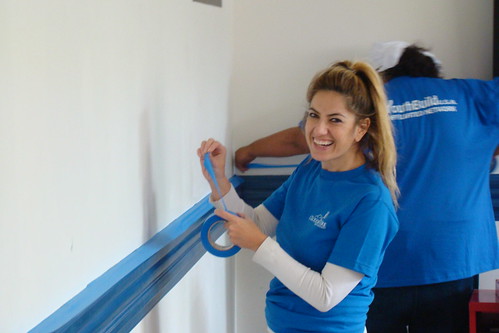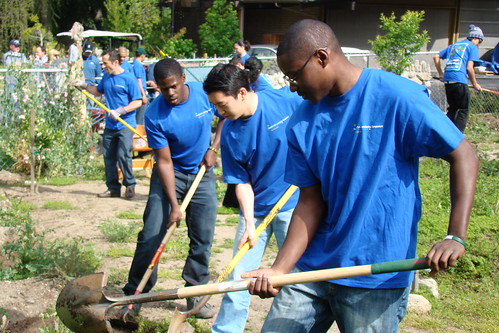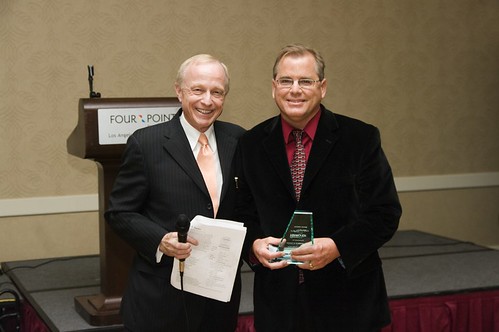I believe that advocates for people experiencing homelessness have made a big mistake in taking sides in the Housing First struggle, pushing for an either/or approach to responding to and ending homelessness in the U.S.
This news article from Columbia, South Carolina also spells out the problem:
Columbia Phasing Out Backing of Homeless Project
By ADAM BEAM, McClatchy Newspapers
http://www.thestate.com/
COLUMBIA, S.C. – Columbia is phasing out its support for Housing First, the program that places the chronically homeless into permanent housing scattered throughout the city.
The program, which began in 2007, is operated by the University of South Carolina School of Medicine and the Columbia Housing Authority. Its contract expired in June but was renewed for another year.
But with a shrinking budget, council members have asked Housing First officials to begin looking elsewhere for the $247,166 it takes to run the program.
Housing First was a shift in the city’s homeless strategy, focusing on placing the homeless in private, permanent housing around the city instead of concentrating all of its homeless services on one comprehensive shelter.
But Housing First targets the chronically homeless, defined by the federal department of Housing and Urban Development as people who have been continuously homeless for a year or more or who have had four instances of homelessness in the past three years. It does not serve the larger temporary homeless population – folks who find themselves suddenly homeless after a job loss or an accident.
For that reason, the city has begun shifting its money back to a homeless shelter-based approach.
It continues to operate a $500,000 winter homeless shelter and has agreed to contribute $250,000 to the Midlands Housing Alliance, which is building an $11.7 million homeless center. Council members say they can no longer afford the money it takes to place Housing First’s clients into permanent housing.
“We’d love to, but you can’t serve as many people with Housing First,” Councilwoman Tameika Isaac Devine said. “We still have an obligation to provide the winter shelter.”
While Housing First is expensive, it avoids one of the major pitfalls of homeless services by not having a homeless shelter. Instead, clients are placed in apartments evenly divided among the city’s four council districts. That’s a big selling point for local residents, who often oppose homeless shelters near their neighborhoods.
Most homeless services operate by first providing homeless people with job training, health care and mental health counseling before the ultimate goal of transferring them to permanent housing. But Housing First is the opposite, providing the permanent housing first, followed by the other services.
“We actually find that by providing housing first, you end up with people being clean and sober and people with employment and people with income and people with health care,” said David Parker, University of South Carolina’s director of research and assistant professor at the Department of Medicine who runs the Housing First program.
Since its inception, Housing First has placed 54 people into permanent housing. Of the 54, the average time they were homeless is eight years, Parker said.
The Columbia Housing Authority works to place the clients into permanent housing and train them on how to live in a house.
“The first person we moved in was 15 years on the streets. He doesn’t know how to clean an oven,” said Nancy Stoudenmire with the Columbia Housing Authority. Currently, the program has 20 people in apartments throughout the city. Thirteen of them are paying a portion of the rent, Stoudenmire said.
Eight clients have successfully transitioned out of the program into independent housing, Parker said. They include a woman whose Housing First apartment was originally furnished by another local nonprofit organization.
“She was so grateful to that nonprofit for (buying the furniture) – she basically made a donation that would cover furniture for somebody else’s apartment,” Parker said. “We get to see a completely different side of homeless people than is often publicized.”
As for the future of the program, Parker and Stoudenmire say they are trying to find grant money to keep it going, including pursuing funding from the Tenant Based Rental Assistance Program.
If it is able to survive, Parker said Housing First also would help out other homeless service providers in the area.
Read more here.
————————————————————————————–
I recently saw an opportunity for HOME funds to come down from the Federal Government to LA County, and in the description of the funding it mandated that these funds can only be used for Permanent Housing Opportunities.
At a time when we are facing the biggest need ever, and I mean the biggest need in the history of Union Rescue Mission’s 119 years, even bigger than the Great Depression, this restrictive description of the funding was difficult to hear. Let me first describe the need. In 1933, there were 1.2 million people residing in L.A., and URM fed 133,000 meals. Last year, there were 3.6 million people in the City of Angels, and we fed 1.25 million meals! That is a 3 fold proportionate increase in need and services, and we are just 1 of many missions/shelters today, rather than being one of the only ones as we were in 1933!
We ourselves are struggling with how to divide our resources. Do we move all of our resources to our Hope Gardens Family Center or keep all of the resources at our downtown URM emergency response? Do we let public officials cry out Housing First only, move all resources to provide permanent supportive housing for the 20% of people experiencing homelessness who are the most chronically homeless and away from the 80% who are episodically experiencing homelessness or who are experiencing homelessness for the first time?
It may be an easy public policy decision to move all of the resources to Housing First only, but when you are on the ground, facing a tsunami of families with children, including one little 4 year old guy named Dorian, who is struggling with a terminal illness, it is a bit more difficult to make the decision to close the shelters/emergency responses down and move the resources to building only a few permanent housing units compared to the vast need. It is like picking a few drowning victims out of an ocean full of need.
If the full truth be known, in that 80% of people experiencing homelessness, there are many who, if their needs go unmet and they are denied emergency services, will in fact end up as the chronic homeless people of tomorrow. Studies show that the adults experiencing chronic homelessness today were the children who experienced homelessness and poverty a generation ago. They were sick twice as often, their self-esteem was hurt, they fell behind in school, they were in and out of foster care, and they became our chronically homeless people. That means that our children today experiencing homelessness will be our chronic homeless adults of the future, unless we quit the either/or approach and take a common sense, aggressive Both And approach like Union Rescue Mission’s own You Are The Mission 10 Step Initiative to end homelessness.
As Columbia, South Carolina realized, you can’t turn your back on the multitudes to help a few, but I believe that unlike Columbia, our decision needs to be to step up and provide the much needed help of permanent supportive housing for the few, while still doing everything we can to address the needs of many, and not let one precious human being experience the brutality of life on the streets.
To read more about this subject, check out this article by Ralph Da Costa Nunez, “One Size Does Not Fit All”
As always, I welcome and appreciate your feedback.
Blessings,










